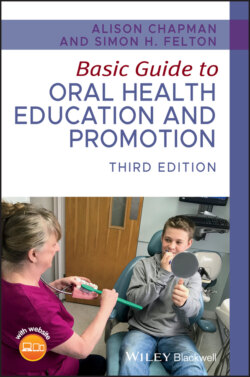Читать книгу Basic Guide to Oral Health Education and Promotion - Alison Chapman - Страница 96
Secondary risk factors in the development of periodontitis
ОглавлениеSecondary factors are important in the development of periodontitis, and include:
Smoking – the most important risk factor. Periodontal disease is more common in smokers than non‐smokers [2]. Treatment response in smokers is also poorer than non‐smokers. Smoking is thought to:Reduce blood flow in the gingivae.Reduce white blood cell mobility and function.Impair healing.Increase inflammatory substances (cytokines).
Poor oral hygiene – failure to clean effectively, leading to plaque accumulation.
Age – older people are more likely to have periodontitis, due to being exposed to plaque for a longer period than younger patients, and older people do not heal as easily.
Plaque retention factors – poorly finished/worn fillings, dentures, crowns, bridges, partially erupted/impacted teeth, and supragingival/subgingival calculus (see Chapter 2).
Crowding and malocclusion – one of the reasons for carrying out orthodontic treatment in childhood is to improve access to tooth surfaces and the ability to clean them, and prevent periodontal disease from occurring later. Bone loss associated with malocclusion is usually localised and not associated with poor oral hygiene.
Carious cavities – plaque‐retentive ledges.
High frenulum insertion – usually found buccally on lower anteriors. The frenulum is a fold of mucous membrane, which limits the movement of the lower lip. If the insertion of the membrane is high on the gingivae, it can prevent effective oral hygiene and cause gingival recession.
Systemic conditions (see Chapter 8) – for example, patients with diabetes, Down’s syndrome, immunological disorders, and those who experience hormonal changes (e.g. during pregnancy and puberty).
